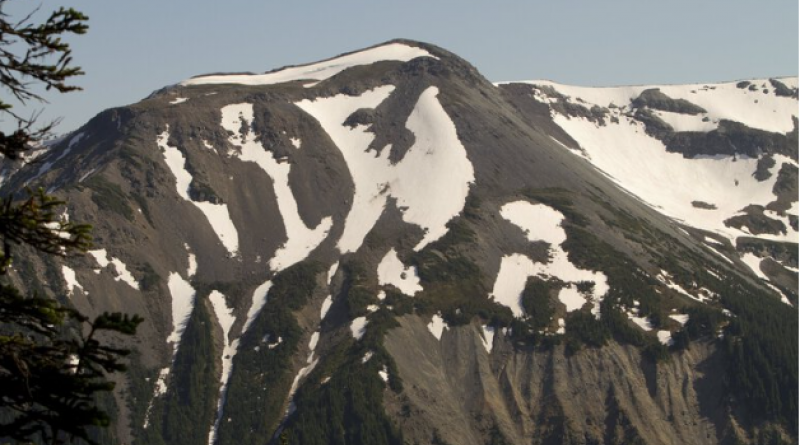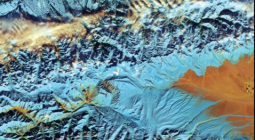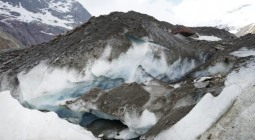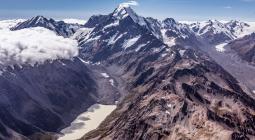Heat wave sends water pouring off Mount Rainier, exposing glaciers to summer heat sooner

A torrent of melted snow has flooded rivers and streams near Mount Rainier following record-setting heat throughout Washington.
“We had a huge amount of snowmelt over a short period of time,” said Kevin Bacher, a spokesperson for Mount Rainier National Park. “Our snowpack, which had been running a little bit above average up until about a week or so ago, suddenly plummeted and now we are below average.”
That influx of water led to murky rivers and washed out at least one footbridge near Carter Falls, Bacher said.
The park’s weather monitoring station at Paradise, which is at 5,400 feet, recorded a peak temperature of 88 degrees last Monday, June 28, setting a record for the month of June. Meanwhile, 10,100-foot Camp Muir hit 66 degrees.
With cooler weather later in the week, Bacher said streamflows are returning to normal.
But, the impact of last week’s heat will be long lasting. Normally, Rainier’s glaciers remain covered in snow late into the summer. That snow protects the glaciers from melting.
With an early heat event like this, that likely won’t happen, Bacher said.
“The snow is what was melting and insulating the ice underneath,” he said. “Now the ice is less protected. We will continue to lose glacial ice on the mountain.”
Glaciers have been receding, in Washington and throughout the U.S., for the past century. For example, Rainier’s Nisqually Glacier has lost 39% of its surface area in the past 119 years, Bacher said. All told, Mount Rainier’s 29 named glaciers have lost one-third of their coverage and 45% of their thickness since 1900.
The quick melt will also impact recreation.
For eager hikers, it means that some trails — like the Wonderland Trail — will be snow-free sooner, Bacher said.
For climbers, the dramatic loss of snow will make finding safe routes up the 14,411-foot mountain harder, as formerly ice-anchored rocks loosen and snow-covered glacial crevasses are exposed.
Finally, water can accumulate under the glaciers in chambers building up pressure until they release in one “big pulse,” sending a torrent of water flooding down an otherwise calm stream or river, Bacher said.
Not much is known about the phenomenon, Bacher said. But, he urged hikers and other recreationists to be aware of the possibility. The pulse of water is preceded by “what sounds like a freight train.”
“If you are in one of the river valleys and you hear a freight train coming, you should get to high ground as quickly as possible and not stand by the river hoping to film it for your YouTube channel or whatever,” he said.
3 July 2021
The Seattle Times




